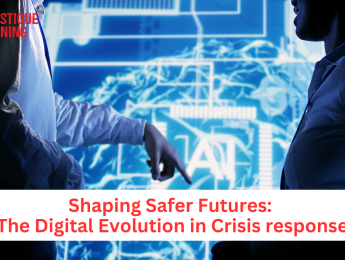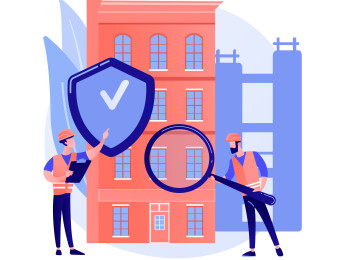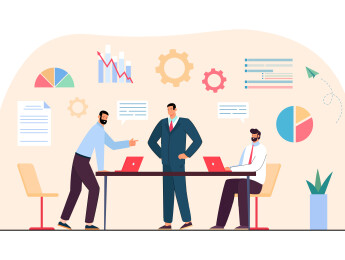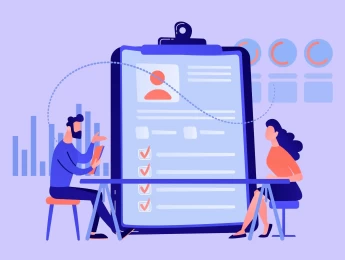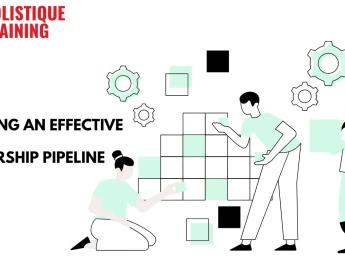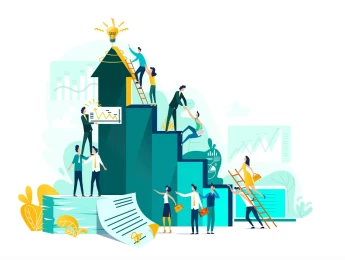Introduction
In an era of increasing global crises, from natural disasters to cyber threats, the need for swift and effective response mechanisms has never been greater. Digital transformation has revolutionized crisis response, leveraging artificial intelligence (AI), big data, geospatial technology, and automation to enhance situational awareness, optimize resource allocation, and streamline coordination efforts. This article explores the evolving landscape of crisis management, backed by case studies, statistics, and expert insights.
The Digital Transformation of Crisis Response
The Evolution of Emergency Communication Tools
Traditionally, crisis response relied on manual coordination and radio-based communication. However, with the advent of digital platforms, emergency management agencies now use mobile applications, cloud-based systems, and AI-driven analytics to enhance response efforts. A report by the World Bank highlights that digital communication tools have improved response times by 40% in disaster-stricken areas
Traditional Methods | Digital Innovations |
|---|---|
Radio and landline communication | Mobile apps with GPS tracking |
Paper-based reporting | Real-time cloud data sharing |
Manual dispatching | Automated dispatch and AI-based decision-making |
The Role of Mobile Apps in Disaster Management
Mobile applications such as FEMA App, MyShake (earthquake alerts), and Disaster Alert provide real-time updates, evacuation routes, and emergency contacts, making them indispensable in crisis situations.
Application | Function |
|---|---|
FEMA App | Provides real-time weather alerts, emergency preparedness tips, and disaster recovery information. Users can locate shelters and apply for federal disaster assistance. |
MyShake | Detects earthquakes using smartphone sensors and provides early warnings to reduce damage and casualties. Developed by UC Berkeley’s Seismology Lab. |
Disaster Alert | Offers real-time tracking of global disasters, including hurricanes, wildfires, and floods, with interactive maps and emergency response recommendations. |
Challenges:
1. High development and maintenance costs:
Developing advanced technologies and systems, such as satellite internet or AI-driven solutions, often requires significant financial investment. Additionally, ongoing maintenance expenses, including updates and repairs, can strain budgets. This financial burden can be a major obstacle for governments and organizations, especially in regions with limited resources.
2. Limited accessibility in remote areas:
Despite advancements in technology, certain remote or underdeveloped areas may still face challenges in accessing these solutions. Physical barriers, such as harsh terrain, or socio-economic factors, like lack of infrastructure, can limit the reach and effectiveness of technologies like satellite internet or mobile apps. Overcoming these hurdles requires innovative approaches and sustained efforts.
3. Technical failures in extreme conditions:
Technologies are often tested under standard conditions, but extreme environments—such as severe weather or natural disasters—can lead to unexpected failures. For instance, satellite systems might struggle during heavy storms, or redundancy mechanisms could face issues in extreme temperatures. Addressing these challenges necessitates robust designs and contingency plans to ensure reliability.
Solutions:
1.Governments subsidizing mobile app development:
By providing financial support to developers, governments can encourage the creation of innovative and practical mobile applications. These subsidies can make it easier for startups and smaller companies to develop apps that address critical societal needs, such as education, healthcare, and communication, especially in underserved regions. This approach fosters technological growth and enhances accessibility for all.
2. Satellite-based internet for remote access:
Satellite internet involves using satellites to provide internet connectivity to remote or hard-to-reach areas. This solution is especially valuable for rural or isolated communities where traditional internet infrastructure like fiber optics or cables is challenging to implement. By adopting satellite-based systems, it becomes possible to bridge the digital divide and ensure that everyone, regardless of location, has access to online resources and opportunities.
3. AI-driven redundancy systems to prevent failures:
Redundancy systems rely on backup components or processes to ensure uninterrupted functionality in case of technical failures. Incorporating artificial intelligence into these systems enhances their effectiveness by allowing them to predict potential issues and respond proactively. AI-driven redundancy ensures that critical operations, such as communication networks or power grids, remain functional during unexpected disruptions, significantly reducing downtime and improving reliability.
AI, Big Data, and Predictive Analytics in Crisis Management
AI Models for Disaster Prediction
AI models use vast datasets, machine learning algorithms, and real-time monitoring tools to predict potential disasters before they occur. These models rely on historical data, satellite imagery, sensor inputs, and climate patterns to identify trends and forecast potential crises.
How AI Models Work:
- Data Collection: AI collects information from satellites, IoT devices, seismic sensors, and meteorological stations.
- Pattern Recognition: Machine learning algorithms analyze historical data to detect warning signs of disasters like hurricanes, floods, and wildfires.
- Real-Time Monitoring: AI continuously processes incoming data to update predictions and provide early warnings.
- Risk Assessment: Predictive AI categorizes areas based on vulnerability and provides emergency response teams with crucial risk insights.
- Decision Support: AI models generate actionable recommendations for governments and agencies to prepare or mitigate disasters.
What Can AI Predict?
- Hurricanes and Typhoons: AI models like NOAA’s Hurricane Forecasting System analyze wind speeds, ocean temperatures, and air pressure to predict storm paths.
- Earthquakes: AI-based seismic monitoring can detect early tremors and assess their likelihood of escalation.
- Floods: Google’s AI Flood Forecasting Initiative helps predict rising water levels and issues alerts in flood-prone regions.
- Wildfires: AI-powered thermal imaging identifies high-risk areas before wildfires spread uncontrollably.
- Epidemics and Pandemics: AI analyzes disease spread patterns, as seen in COVID-19 predictive models used by WHO.
What is Predictive Analytics and How It Minimizes Response Delays?
Predictive analytics is the practice of using AI and big data to foresee events before they happen. This technology helps emergency responders by:
- Identifying High-Risk Zones: AI-powered heat maps visualize vulnerable areas for targeted relief efforts.
- Optimizing Resource Distribution: Predictive models ensure supplies, personnel, and medical aid are directed efficiently.
- Enhancing Early Warnings: Governments and agencies receive faster, more accurate alerts, reducing casualties and infrastructure damage.
- Reducing Response Time: Automated AI alerts trigger instant responses, allowing emergency teams to mobilize quicker than traditional methods.
Effective Communication and Coordination During Crises
The Role of Social Media in Crisis Management and Public Awareness
Social media platforms like Twitter, Facebook, and WhatsApp have become powerful tools for emergency response. These platforms play a vital role in:
- Real-Time Alerts: Governments and emergency agencies use Twitter alerts to provide live updates during crises.
- Public Awareness Campaigns: Facebook and Instagram help spread safety instructions and preparedness measures.
- Crowdsourced Information: Social media users share local conditions, assisting responders with accurate ground-level insights.
- Community Mobilization: Online fundraising and volunteer coordination occur through platforms like GoFundMe and local Facebook groups.
Outcomes of Social Media in Crisis Response:
- Faster Emergency Response: In 2021, Twitter’s AI-based crisis detection reduced response times by 25%.
- Increased Community Engagement: Surveys indicate that 78% of people rely on social media for crisis updates.
- Reduced Panic and Misinformation: Verified news from agencies like WHO and FEMA prevents false rumors from spreading.
Crisis Mapping and GIS for Emergency Response
What is GIS and Its Applications in Crisis Response?
Geographic Information Systems (GIS) use location-based data to visualize and manage emergency responses. GIS applications include:
- Disaster Area Mapping: GIS software like ArcGIS and QGIS create real-time disaster maps, showing flood zones, wildfire paths, and evacuation routes.
- Resource Allocation: Emergency teams use GIS to position supplies, first responders, and medical units effectively.
- Damage Assessment: Satellite imagery from GIS tools assesses infrastructure damage post-disaster.
- Evacuation Route Planning: Authorities plan safe exit routes using GIS analytics to reduce congestion and risk.
GIS Case Study: COVID-19 Response
During the COVID-19 pandemic, Johns Hopkins University developed a GIS-based dashboard to track infections, guiding containment strategies worldwide.
Cybersecurity and Data Protection in Crisis Situations
Cyber threats refer to malicious attacks targeting digital infrastructure. During crises, cyberattacks become more severe, disrupting emergency response systems.
Common Cyber Threats Includes:
- Ransomware: Hackers block access to critical emergency data until a ransom is paid.
- Phishing Attacks: Fraudulent emails trick responders into revealing sensitive information.
- Data Breaches: Unauthorized access exposes crisis response plans and personal data.
Why Cyber Threats Are a Crisis?
1.Disrupts Emergency Operations:
Cyberattacks targeting hospitals, emergency services, or first responders can cripple essential systems. For example, ransomware attacks may lock access to critical patient records or communication tools, leading to delays in life-saving interventions. These disruptions can have devastating consequences for individuals relying on urgent care during emergencies.
2. Financial Losses:
Governments, businesses, and organizations suffer significant financial damage due to cyber breaches. Costs arise not only from the theft of sensitive data but also from repairing compromised systems, compensating affected individuals, and implementing improved cybersecurity measures. These cumulative expenses can run into billions annually, draining resources that could have been invested elsewhere.
3. Public Safety Risks:
Crisis response systems play a vital role in managing natural disasters, public health emergencies, and other critical situations. If these systems are compromised by cyber threats, it can hinder communication and coordination, putting lives at risk. For example, a cyberattack on evacuation planning systems during a natural disaster could lead to confusion and endanger affected communities.
Emerging Technologies and Future Applications
Technology is transforming the way crises are managed, bringing unparalleled efficiency, precision, and effectiveness to emergency response efforts. Drones and robots have emerged as vital tools in disaster scenarios. Drones offer aerial reconnaissance, locate survivors, and deliver essential supplies to areas that are otherwise inaccessible, while robots excel in search-and-rescue missions, detecting survivors in collapsed structures and hazardous zones.
In addition, blockchain technology is revolutionizing aid management by providing a secure and transparent system for tracking the distribution of relief funds and resources, significantly reducing the risk of fraud or mismanagement. Wearable technology is also enhancing the safety and effectiveness of emergency responders, with sensors that monitor vital signs, detect fatigue, and offer real-time GPS tracking to improve coordination and response. Together, these advancements are reshaping the future of crisis response, ensuring faster and more reliable solutions in the face of emergencies.
Conclusion
The digital revolution is transforming crisis response, enhancing coordination, efficiency, and resilience like never before. With innovations in AI, big data, GIS, and cybersecurity, the future of disaster management promises to be smarter and more impactful. By leveraging these technologies, we can reduce risks, save lives, and build a safer, more secure world.
Take the first step toward preparedness today—enroll in our crisis management courses and stay updated by subscribing to our newsletter. Together, we can shape a resilient future!


